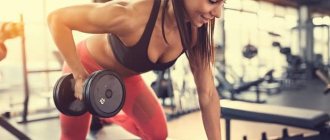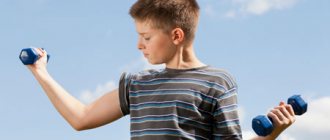So, here's the basis of what you're all here for. I'm going to squat, squat, and squat. In fact, I'm not going to do anything at all except squats. I chose the exercise that was best suited to adapt my body to the stress of sports and improve its overall functionality in both sports and life. My goal: overall strength gains over time... but really all I'm going to do is squat every damn day.
David Lipson
At the end of May 2010, David Lipson (best known as the husband of Camille LeBlanc-Bazinet) began his marathon. Target? Squat every day, performing at least 1 repetition with a weight greater than 450 lbs (204 kg). He did it in memory of his friend, CrossFitter Amanda Miller, and to raise awareness of melanoma, the disease that killed her at age 24, less than a year after she competed in the 2009 CrossFit Games. .
At the end of this year, Lipson improved his performance in squats and other types of exercise. He has also raised thousands of dollars for the American Melanoma Foundation. To top it all off, he had acquired a terrifying knowledge of squats. Now he's sharing some of that knowledge.
The squat is the king of all exercises. There is no exercise more important and fundamental than that which involves the basic ability to raise and lower your center of gravity and convert your strength into mobility, all while keeping your back in the proper position as you lower your body.
You should always squat. Do you want to sit down? Squat! Are you going to the toilet? Squat! If you lose the ability to squat normally, you lose the ability to live independently. Imagine the picture: “Help! I fell and can’t get up!” To put it as simply as possible, squats are an exercise you should want to do and do well for the rest of your life!
Squats are also great for stimulating your entire body. This is an extremely multifunctional exercise that allows you to load your skeleton with more weight, compacting the bone structure itself over time. The core muscles are trained by being in a static position as the force flows through the entire body into the ground.
There are not many exercises that allow you to lift so much weight and use so much strength. And the intensity of squats activates the neuroendocrine system, which leads to the filling of the body with anabolic hormones, such as testosterone, for example. There was a time when I was squatting over 455 pounds and doing at least one rep a day for a year.
After the third month, my strength increased dramatically and I began setting personal records of 670 lbs (304 kg) in the deadlift and 375 lbs (170 kg) in the bench press, without even trying. Well, in the end, squats are the fastest way to get a tight and strong butt as quickly as possible.
There are many great strategies for improving your squats. Many of us, when studying according to a linear system, begin to experience a stop in development. This happens when we stop changing various things in our program that could provide a new stimulus to our body. There are many ways to work on your squats. Here are 10 ways that I consider the most effective.
Increase your elasticity
Squat below the parallel point of your pelvis and knees, but use different stances and bar placement. For example, I’ll try a high position of the bar lying on the trapezium and at the same time a narrower stance in the legs. This rack is also good for weightlifting. Then try a wider stance while placing the barbell lower on your shoulders. This type of squat works more on the hips and back. You will see for yourself that using different positions uses different muscle groups and requires completely different types of flexibility from you.
How to Reach Your Squat Potential. Part 1
Bill Starr IM No. 8, 2000
Since the squat is the foundation of any strength program, you should know how to succeed in this exercise. Often, when progress in it slows down, athletes get lost and begin to look for replacements in the form of lunges, leg presses and a number of other leg exercises. Of course, changes in training programs bring some benefits. But by overdoing these exercises at the expense of squats, athletes are actually taking a step back in developing leg strength. And this is completely unacceptable.
At the very beginning of any program, you need to pay special attention to squat technique.
This also applies to those who start training after a break. Many of those who used to squat in great shape return to training with terrible technique, usually because they are in too much of a hurry to get back to their previous results. The same can be said for beginners. They are too concerned with squatting with a certain weight, forgetting about the form of the exercise. If you don't develop proper technique early on in your bodybuilding career, your progress will not be as good as it could be and your end results will be far below potential. In addition, incorrect movement technique is a kind of “invitation to a traumatologist.” All this is so elementary that it would seem that it does not need repetition. But in many gyms, the people charged with overseeing proper form are so concerned with getting their trainees to hit certain numbers that they allow them to lift weights with incorrect form that they are clearly not ready for.
From time to time this situation arises in my gym. I am informed that a new athlete will come to my gym to train, who squats with a weight greater than the record for my gym - 285 kg. Usually the figure is about 320 kg. Everything sounds very convincing until I see the squats themselves, which in reality usually turn out to be half squats. When I get the record holder to drop below parallel to the floor, a normally 320kg squat suddenly becomes a 175kg squat. Sometimes the blow to an athlete's pride is so strong that he can never recover from it. None of these great squatters had ever done real, full squats. And this is most likely the fault of the coaches. High scores show them in a good light. This often happens in big sports. Ultimately, the athlete himself loses the most.
The second important point in the science of squatting correctly is polishing the technique as you grow in strength. Experienced athletes also make mistakes, but they are of a slightly different kind than beginners. Most often this happens to those who are most successful compared to others in a given room. It is understood that they know perfectly well what they are doing, and no one will dare to reprimand them. How could it be otherwise, they are the best! But the fact is that every athlete at any level of development needs to monitor compliance with the exercise form and search for weak points.
Another important aspect of achieving success is the time it takes to build a strength base and gradually improve it. It seems that I again said a completely obvious thing, but many athletes, for the sake of their ego, forget about this in the pursuit of numbers. A comparison with a pyramid is appropriate here. The stability of the top depends entirely on the width of the base. The same goes for squats or any other strength exercise. Your final results depend entirely on the basic work you do. This process cannot be customized. Anyone who is in a hurry in this matter will certainly end up with injury or overtraining, or even both at once.
So, if you want to achieve something in squats, constantly improve the technique of performing the exercise, gradually increase the total volume of work, look for and overcome weak points. The importance of a good coaching eye here cannot be overstated. An experienced mentor will notice if any muscle group is lagging behind and will suggest an exercise or an entire program to work it out.
It is also important to understand that in an exercise such as the squat, each person has certain limitations. Even if a person has developed excellent shape and spent half his life building a strength base, the result largely depends on the own weight of each individual person and on his anatomical features. You may see a contradiction here with what I said earlier. Understand that you must strive to realize your current real potential. An athlete weighing 75 kg will never be able to squat 205 kg, but with 185 he can. If he wants to cross this line, he needs to gain weight. Many, however, do not want this. They stop there and continue squatting to stay in shape or to improve their performance in another sport.
I once worked with a sprint cyclist who progressed beautifully in the squat until he reached 194kg. We tried to increase the weight and decrease it, but the result remained the same. The only way to overcome this obstacle was to increase his own weight, but he did not want that. A 194kg squat is a decent result and if he added more weight it would have a negative impact on his bike sprint performance. So he continued to lift this weight to maintain his form.
It's no secret that some people are designed by Mother Nature to never be able to squat huge weights, no matter how heavy their bodyweight is or how much they train. But even such super-heavy people can significantly increase their strength if they are diligent enough. Perhaps the weights they lift will not impress others, but for themselves they will know that they have achieved something and for them this is quite enough. Whatever your experience, goals, and genetic makeup, you can realize your squat potential.
When developing the technique of performing squats, the main attention should be paid to the position of the bar and legs. This is very individual, but there are some general rules. Most people find it comfortable to place their feet slightly wider than shoulder-width apart. The toes should be slightly turned out, but not too much, otherwise this can lead to knee injuries. According to my observations, wider foot placement is comfortable for tall people. The wider it is, the less the socks should be turned outward.
Taller people also find it more comfortable to place the bar slightly lower than usual. And the usual position of the bar is the top of the trapezius muscle. If tall athletes place the bar this way, they usually move their torso too far forward during squats. If you are tall, place the bar lower. But don’t overdo it, too low a position can cause shoulder injury. Also, unless you're a powerlifter, you need deeper squats.
However, despite everything said above, you should experiment for some time with the position of the feet and the bar and choose the best option for yourself. The only thing you should be wary of while developing form is the bad habit of leaning forward while squatting. Yes, powerlifters do this on purpose - in order to lift more weight. But don't forget that they do a lot of work to strengthen the lumbar muscles beforehand. And until you have significantly strengthened them, leaning forward is quite dangerous.
One of the very important requirements for performing the exercise is to remain very, very tense throughout the entire range of motion. You should tense your muscles almost to the point of cramping. Many athletes relax their muscles slightly as they lower into the bottom position. Their thoughts are occupied with how they will rise up. This is not so bad if you work with light weights, but not in the case of extremely heavy ones! Relaxing while lowering is dangerous for many reasons, one of which is the knees. With such a relaxed descent, there is a tendency to “kick” in the bottom position, which is very dangerous for the knee joints - especially for beginners and those who resume training after a break.
It is quite difficult to tense all the muscles needed to lift from the bottom position when the bar is already moving. The body must be prepared for this in advance. If you move the bar up while fully braced and ready, you can easily get it through sticking point.
It's best to prepare for this before you start the movement, tense all your muscles and focus on it. After removing the bar from the rack, begin the preparation process. “Grip” the floor with your feet, let a wave of tension rise up throughout your body - legs, pelvis, back, shoulders. I always tell my students, before they start going down, to imagine that they are about to squat 300kg. Tighten your trapezius, as if trying to lift the bar with them, take a breath and begin the movement. If all your muscles are tense, it will be much easier for you to rise.
Plus, it helps bring the bar into the correct position at the bottom. This is a point many people miss, but if you get into the wrong bottom position with a lot of weight, your chances of getting back up are greatly reduced. Keeping your core tight allows you to guide the bar along the correct path. If you come down relaxed, the rise will be even worse, especially with heavy weights
Don't skip this preparation even during your warm-up set. After a while it will become a habit, which is what you want. Once you learn to do each rep as if it were your only rep, and with as much weight as possible, your squat performance will begin to steadily increase.
What about head position? Some coaches teach their players to look up, some to look down. This is also very individual. I have seen many experienced athletes hold their heads in different ways. But in any case, you should not force her to be in a certain position, that is, look up or down. This is quite a lot of stress for the upper spine, which already receives considerable stress during heavy squats. The head should be in a position that is comfortable for you.
If I notice that an athlete is leaning too forward when coming out of the bottom position, I encourage them to lift their head slightly. And vice versa, if it deviates, lower it. Like gymnasts, athletes must use their head as a balancer during squats.
I teach my students to hold the bar very tightly, not allowing it to move on their shoulders. Many people come to me with the confidence that the bar should rest freely on the trapezius, and the habit of a very wide grip - almost right up to the discs. But this does not allow you to control the bar when working with heavy weights. Many wide-grip athletes simply lack flexibility in their shoulder joints. A few weeks of stretching can easily solve this problem.
When you start training after a long break, stick to the “five out of five” pattern, using a heavy, medium and light concept. Some advise beginners to perform 10 or more repetitions, thereby trying to limit the working weights. But most often the guys get tired quickly and lose their technique by the end of the approach, which is completely unacceptable. With five repetitions, you can always keep a close eye on your form, and if you want to give more load, increase the number of approaches.
I especially advise beginners to have an easy day; it will help them concentrate on the technique of performing movements. Over time, you'll be able to perform heavy sets of three reps on a moderate day, and add a finishing set of 8-10 reps on heavy or moderate days. These are the first steps to building your strength base.
I have always maintained a squat program three times a week. After many years of working with people, I have come to the conclusion that this approach produces the best results. Squats twice a week don't provide as much loading and don't allow for much variability in your squat programs. But as the weights increase, you may feel the need for more time to recover your muscles, and then it makes sense to switch to squats twice a week. If it works for you, great.
Many athletes only lift weights for three or four months out of the year before moving on to other sports. In such cases, performing squats three times a week will be the best regimen for heavy training. In such a short period of time, athletes must increase leg strength, and they do this with a three-day program. I know many athletes who have added 100 kg or more to the bar in three months, and this, in my opinion, is a good result.
And now the program for my students. Monday is usually a heavy work day. They do five sets of five reps, the last one at the limit. The finishing set is then performed with a reduced weight, which helps add a little work without too much stress. This set also helps them adjust their technique if necessary. How much weight should you perform it with? This depends on the results of the main program. If it was successfully completed, I make it moderate in load, if not, more heavy. The guys call it a “penalty”, and I agree with them.
My rule of thumb for the final set is to use 20kg less than the heaviest weight in the workout. For example, if you performed 3-5 squats with 165 kg, then in the final set you should work with 145 kg for eight repetitions. However, this is not a dogma. If I notice that the exercise was performed with poor technique, then I set the weight even lower so that the athlete can correct it. After all, with a lot of weight he won’t be able to do this. After doing five rounds of five reps with a 230kg barbell, he had sufficiently stressed his quadriceps to work with 200kg as well. All he will get is overtraining. So I make him do a set with 175 kg, which is also not a “gift” after hard work, but not too tiring either.
In conclusion, I want to once again emphasize the importance of correct technique for performing the exercise. Having mastered the technique, the athlete begins to progress with weights, then I look for his weaknesses, and include new exercises or techniques to eliminate these weak points. In the second part of this article, I will talk in more detail about the technique of performing squats. In particular, I will touch on the issue of developing explosive force when rising from the bottom position, strengthening the adductors and biceps of the legs, as well as passing the sticking point, which will raise the results of your squats to stratospheric heights.
Tags:
HOW TO SWING
Men
Strengthen your back
The spinal column is your “gearbox”, which allows you to use the maximum amount of energy when squats. The lumbar erector muscles are perhaps the most important muscle group for building a strong core and allowing you to safely perform a variety of exercises.
Strengthen your back muscles with deadlifts, hip stretches and a special “good morning” exercise (translated as “good morning” and is a series of exercises aimed at flexing and extending the back with a special weight placed on the neck). Additionally, work on strengthening your upper back muscles by doing barbell rows and pull-ups.
Increasing Weight in Squats: It All Starts with Attitude
Squats are the foundation of strength training. Increasing your squat strength will impact everything, including your life in general.
However, there will come a point when your squat performance begins to slow down and your progress begins to stall. Simply adding more weight to the bar is not always the right solution. More powerful squats often depend on you and your attitude.
You need to build confidence and at the same time train your body to handle more weight.
Here are 4 squat techniques that will allow you to tap the plates on the barbell.
The benefits of basic exercises for muscle growth
The main advantage of basic exercises is the simultaneous growth of muscles and fat burning. The reason is that basic exercises require the body to consume more nutrients. During strength training, glycogen is actively used, and after the end of the training, recovery processes that burn fat are launched.
With regular training using basic exercises, metabolism gradually increases, leading to an increase in appetite - which, again, is necessary for gaining muscle mass, since without additional calories, muscles simply will not grow. This plays a particularly important role for naturally thin ectomorphs who have problems gaining weight.
Building an athletic physique
Technically correct execution of basic exercises has a positive effect on the symmetry of muscle development. As a result of training according to the basic program, not just a pumped-up, but a powerful and athletic physique is formed. In addition, basic exercises have a positive effect on the brain-muscle connection.
Most beginners cannot use the willpower to tense a specific muscle (let alone consciously engage that muscle during training), which indicates a weak neuromuscular connection between the brain and muscles. Performing heavy compound exercises can improve this connection, increasing the effectiveness of the training.
Results
All of the above exercises are great for building muscle mass and have been proven to be effective. But do not forget that muscles do not grow during training, but during rest. Another key element is nutrition, without which any exercise, even the best, will lose its effectiveness. So use the basic exercises described in this article, eat right, give your body time to recover, and the result will simply have nowhere to go!
GOOD LUCK ON YOUR PATH TO SUCCESS!
Disadvantages of basic exercises
The main disadvantage of basic exercises is that they really require perfect knowledge of the correct technique. Performing these exercises with heavy weights significantly increases the risk of injury even with the slightest mistakes - which is why it is best to learn the correct technique for these exercises with a personal trainer.
In addition, many beginners tend to progress too quickly, unnecessarily increasing the working weight and conducting more frequent strength training than their body needs. It must be remembered that basic training should be performed no more than once every 48-72 hours. Otherwise, the result will be chronic overtraining.
The most important for gaining muscle mass are multi-joint basic exercises that increase testosterone and other hormones through a complex effect on the body and central nervous system. Five of these exercises are divided into the basic group - deadlift, squats, bench press, standing barbell press and rows.
- Best Stimulators of Growth by Tom McCullough, MEd., source
- Research 'The Effects of Testosterone on Muscle Size', source
Heavy squats at 2/3
Once you've gotten used to having a heavy weight on your back, the next step is to start performing a full squat, and a partial squat at the top of the movement is a great way to boost your confidence and gain muscle.
Working through only one part of the range of motion allows you to lift more weight than with full, high-repetition squats. This way you can train your muscles to a much greater limit.
Set the safety bars to 1/3 of the entire length of the squat. But they should be set low enough that you don't just bend your knees.
In addition to gaining confidence and mass, you'll also improve your connective tissue and be ready for hard work.
How do barbell squats affect your waist size?
Among those starting to train in the gym, and most often from women, you can hear: “I am afraid to do squats with a barbell or deadlifts because these exercises will make my waist even larger.” This is especially scary for women, since adding a couple of extra centimeters to the waist is not a very bright prospect for them - and it doesn’t matter whether it’s muscle mass or fat tissue.
So how do squats, deadlifts and other similar exercises really affect your waist size and are they any real cause for concern? Let's look at this issue in more detail.
Question one. To date, there are no reliable and long-term studies that would indicate and confirm that performing deadlifts and squats with a barbell causes an increase in waist size. As a result of the lack of experimental data, all we can refer to is the study of the mechanics of movement.
Indeed, both free weight squats and deadlifts are powerful exercises that involve a huge number of muscles - the latissimus dorsi, core muscles, spinal extensors, glutes, quadriceps and many other muscles. But even if you do these exercises almost every workout, following the principle of progression, you will never hypertrophy your abdominal muscles to such an extent that this could affect the increase in waist width.
Everyone who claims that doing deadlifts or squats with a barbell causes an increase in the waist still cannot clearly explain why this happens and, accordingly, describe the mechanism of the entire process. There is a theory that barbell squats and deadlifts cause excessive tension and hypertrophy of the rectus, internal and external oblique abdominal muscles.
Deadlifts and barbell squats really put a lot of tension on your core muscles. Additionally, research shows that squats work the lumbar extensors to a higher degree than deadlifts, and conversely, deadlifts work the upper back more than squats.
Using EMG (Electromyography), scientists have found that isolated abdominal exercises are just as effective on the core muscles as squats or deadlifts. Pull-ups, pullovers, and military presses have an equal or even greater load on the rectus abdominis, internal and external abdominal muscles. Exercises such as planks, side planks, weighted crunches, abdominal rollers, Roman chairs, lying leg raises, and side bends have a greater impact on the core muscles than squats and deadlifts. Therefore, it is impossible to say that deadlifts and squats pump up the abdominal muscles more than the same crunches.
Question two. Genetics. Everything is very simple here, if you are a man and genetically you do not have wide shoulders, small lats, then you will still look massive in the waist area. To correct this, you need to pay more attention to your shoulders and lats to make your silhouette more “V-shaped”. By the way, this rule also applies to girls. Very often girls are afraid to “rock the top.” Of course, everything is individual and in each case the program should be drawn up taking into account the client’s physique and wishes, however, often girls with voluminous hips, in order to balance the figure, need to pay sufficient attention to the upper half of the body during the training process.
Now why does the waist become larger? Most often, the waist becomes larger in professional bodybuilders or amateurs who gain large amounts of muscle mass.
This is primarily due to eating large amounts of food, rather than choosing exercise. As a result, bodybuilders have enlarged digestive organs due to the fact that the body needs to cope with a large volume of food. Various “supplements” play an important role - anabolic steroids, insulin, growth hormone, etc. All systems in such a pumped-up body operate with double voltage.
Men and women whose height and weight correspond to the table below will not have problems with increasing their waist.
You need to understand a simple rule: if you don’t watch your diet, your waist and stomach can increase even without squats and deadlifts.
conclusions
Deadlifts and squats heavily engage the back extensors, which are designed to protect the spinal column. The rectus abdominis and oblique muscles are tense during these exercises, along with the back extensors, which helps stabilize the core muscles.
The level of impact on these muscles in the squat and deadlift is on par with many other strength exercises, such as the military press and bench press. Further more, popular targeted exercises on the rectus abdominis and oblique muscles, for example, hanging leg raises, weighted crunches, abdominal roller, Roman chair activate the abdominal muscles much more strongly than squats and deadlifts.
Therefore, if we proceed from the logic that squats and deadlifts will make your waist massive, you must also avoid all special abdominal exercises, and few people do this.
Dear girls, if you have no direct contraindications to the exercise, then do not be afraid to squat with a barbell and do deadlifts! Few exercises can compare with them in terms of the number of muscles involved. You will gain a beautiful back and strong buttocks in a much shorter time if you include these two great exercises in your training program.
Squats in bodybuilding. Benefits and harms
The squat has the following beneficial properties:
- Accelerated muscle growth for the whole body;
- The best and indispensable exercise for girls, with the help of which a feminine figure is built;
- Improves mood and psychological state. Hormones of happiness from overcoming stress are released into the blood, as well as anabolic substances that promote activity, enterprise, and increased energy;
- The knee joints are strengthened. This is especially true for people who lead a sedentary lifestyle. What is not used quickly becomes unusable. The benefits of squats here are relevant only for correct technique;
- The ability to improve proportions “in one fell swoop.” The squat works the entire lower body. Many men are not focused on the development of the upper body; prejudices interfere with the uniform development of muscles. Lower body exercises like lunges seem feminine. Squats are an exercise that even the most courageous men use;
- Improving blood circulation in the pelvic organs. Squats prevent the development of male diseases such as prostatitis and increase libido. Read more here.
Squats in bodybuilding can be harmful due to the following properties:
- Wear and tear of the knee joints due to improper technique. Weighted squats wreak havoc on men and women with sore joints;
- Growth cessation in adolescents. Significant weight (more than 40 kg) under the age of 18 puts a compressive load on the spine, which slows down height growth and provokes the development of scoliosis;
- Injuries due to incorrect technique.
The harm of squats, for the most part, lies in the incorrect use of the movement.
Squats for women
Squats are the best exercise for girls who want to get a feminine figure.
Bodybuilding squats for women will look like this:
Workout #1
| Exercise | Weight | Approaches | Repetitions | Rest minutes between sets |
| Squats | 20 | 3 | 10 | 2 |
Workout #2
| Exercise | Weight | Approaches | Repetitions | Rest minutes between sets |
| Squats | 20 | 4 | 10 | 2 |
Workout #3
| Exercise | Weight | Approaches | Repetitions | Rest minutes between sets |
| Squats | 20 | 5 | 10 | 2 |
Workout #4
| Exercise | Weight | Approaches | Repetitions | Rest minutes between sets |
| Squats | 20 | 5 | 12 | 2 |
Workout #5
| Exercise | Weight | Approaches | Repetitions | Rest minutes between sets |
| Squats | >22,5 | 3 | 12 | 2 |
Workout #6
| Exercise | Weight | Approaches | Repetitions | Rest minutes between sets |
| Squats | 22,5 | 4 | 12 | 2 |
Workout #7
| Exercise | Weight | Approaches | Repetitions | Rest minutes between sets |
| Squats | 22,5 | 5 | 12 | 2 |
Workout #8
| Exercise | Weight | Approaches | Repetitions | Rest minutes between sets |
| Squats | 25 | 3 | 12 | 2 |
Workout #9
| Exercise | Weight | Approaches | Repetitions | Rest minutes between sets |
| Squats | 25 | 4 | 12 | 2 |
Workout #10
| Exercise | Weight | Approaches | Repetitions | Rest minutes between sets |
| Squats | 25 | 4 | 15 | 2 |
Workout #11
| Exercise | Weight | Approaches | Repetitions | Rest minutes between sets |
| Squats | 25 | 5 | 15 | 2 |
Workout #12
| Exercise | Weight | Approaches | Repetitions | Rest minutes between sets |
| Squats | 27,5 | 3 | 15 | 2 |
We continue to increase the weight, the number of approaches and repetitions in a similar mode.
Comments:
- We specifically showed squats in dynamics, since lack of progress is the main problem of 95% of girls who come to the gym. The same applies to men. We think that since the fifth point is torn off the sofa and works when doing squats, its appearance will improve by leaps and bounds. This is a misconception: training without progressive loads only allows you to stay in shape. Real bodybuilding squats - progression squats;
- You can progress less often. Step every 1-4 workouts;
- Using these schemes, you can improve the appearance of your buttocks and legs, as well as burn fat. A lot depends on nutrition.
Exercises to improve your squat performance
First of all, these are special preparatory and general preparatory exercises.
Special preparatory exercises contain in their structure separate parts of a competitive exercise, and serve mainly to practice the technique of the main movement. At the same time, they are often performed with weights up to 110-120% of the maximum, which further develops strength.
For a squat, this could be partial squats (half squats), bottom squats, pause squats, and so on.
General preparatory exercises are designed to increase the fitness and strength of muscles and muscle groups involved in competitive movement, both as primary and additional movers and stabilizers.
In terms of increasing athletic performance in squats, I would draw your attention to lunges with a barbell, front squats, bending with a barbell, and hyperextensions.
Lifting heavy weights
Lifting a heavy weight during squats is one of the simplest, but no less effective ways that will help you gain confidence and add more pounds to the barbell.
It's very easy to do. For example, your one-repetition maximum (RM) for squats is 150 kilograms. Work up to OM, but don't do a full squat.
Hang weights on a barbell, stand as if you were about to do a regular squat, stand up and just stand with the barbell on your shoulders.
Don't squat. Don't even move at all. Just stand holding the weight behind your back for 8-10 seconds.
Place the barbell on the racks and add another 10% weight so that it is now 165 kg. Stand up again as if you were about to squat.
Tighten up, keep your back muscles and abs tight, and just stand with that weight. Hold the weight for 8-10 seconds, keeping your muscles tense.
After that, add another 5-10% to the bar if you feel you can handle it.
Try to achieve 15-20% above your one rep max.
There are quite a lot of advantages from this:
- Once you become comfortable with a heavy weight on your back, your working weight will feel much lighter.
- Standing with a heavy weight behind your back will work your upper back, trapezius, and core muscles like nothing else. Simply holding a heavy weight in this position will force your body to adapt and work hard with very little chance of injury.
- Your nervous system will get a serious shake-up.
How many approaches and repetitions should I do?
There are “generally accepted standards” according to which to gain muscle mass you need to work within 4-5 sets of 8-12 repetitions. For exercises with a short amplitude, the number of repetitions should be increased to 20-25, and in heavy presses and rows for large muscle groups, it may be worth dropping to 6-8 repetitions. The rest time between approaches is also important; in exercises with heavy weights it is worth increasing it. It is worth understanding that all these values are generalized, you can adjust them specifically for yourself.











